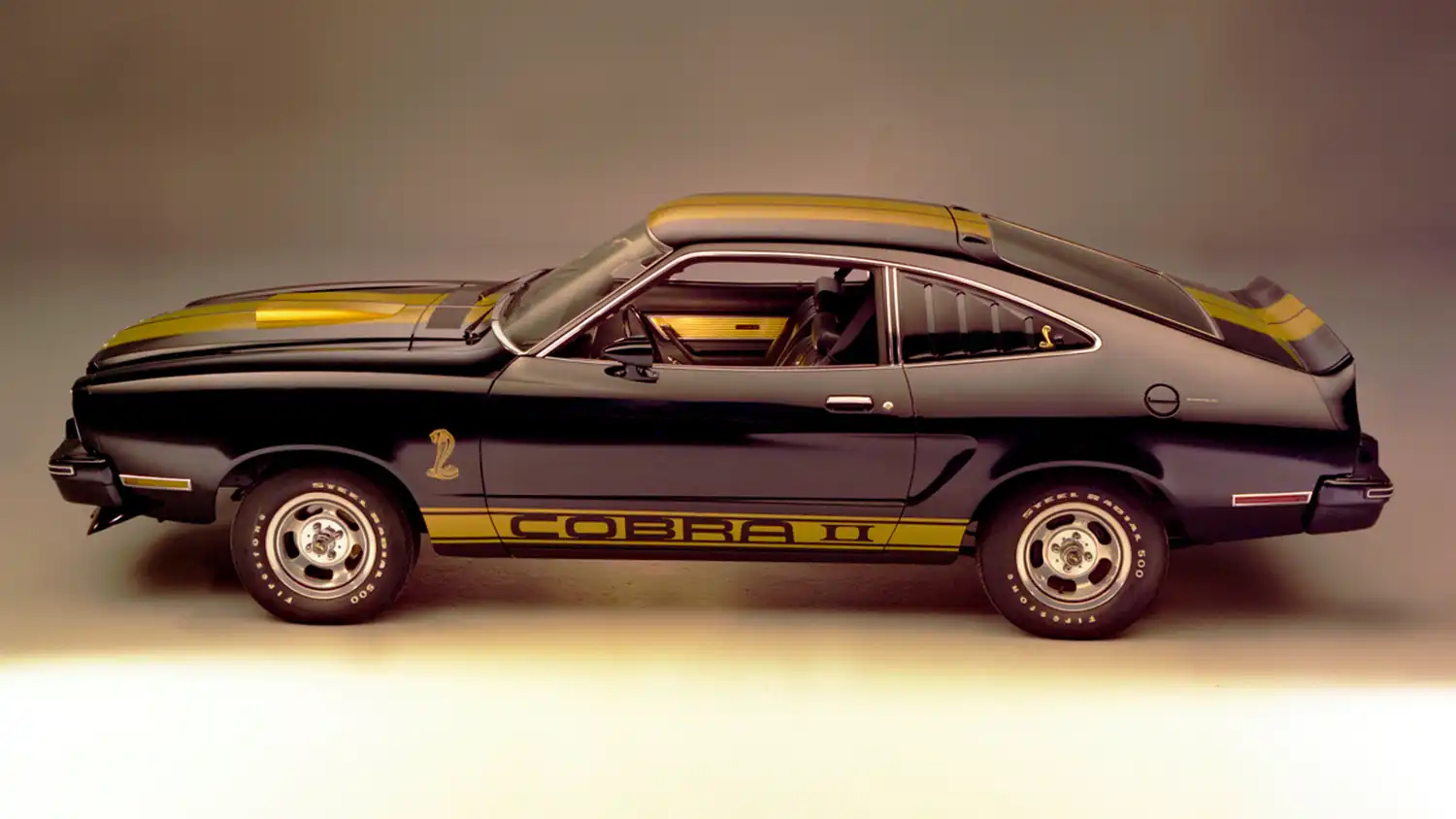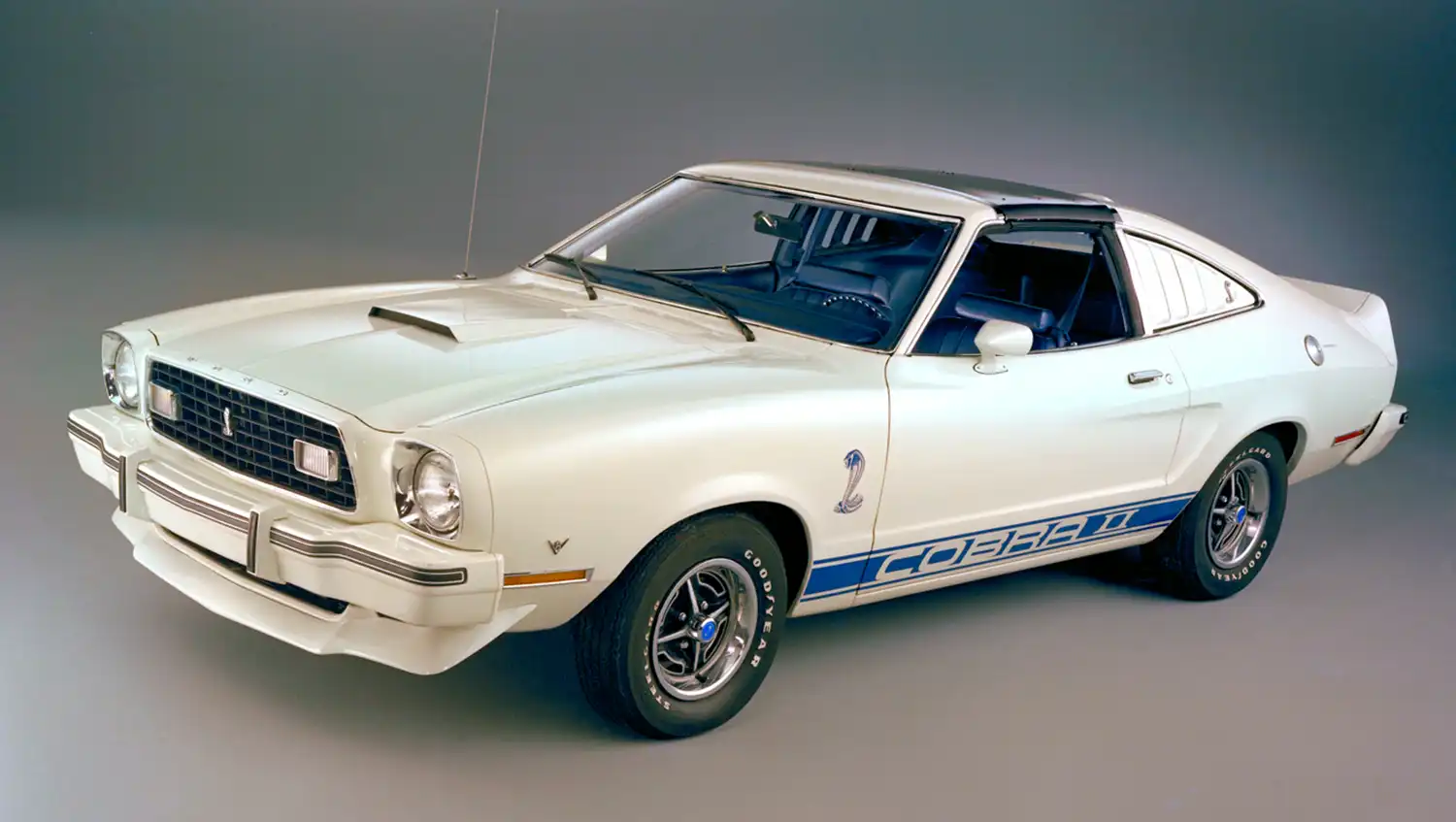
The original Ford Mustang, launched in 1964, created a sensation and defined the “pony car” segment. Its long hood, short deck proportions, and youthful appeal captured the hearts of many. However, by the early 1970s, rising fuel prices and changing consumer preferences necessitated a reevaluation of the Mustang formula. The Mustang II, introduced for the 1974 model year, represented a significant departure from its predecessor. Based on the Ford Pinto platform, it was smaller and more fuel-efficient, aligning with the automotive landscape of the time. The 1976 model year saw the introduction of the Cobra package for the Mustang II, aiming to inject some of the sporty spirit of the original Mustang into this more compact iteration. This marked a distinct second generation for the Mustang, a response to the energy crisis and evolving market demands.
Engine and Performance: The 1976 Ford Mustang II Cobra offered a choice of engines, reflecting the era’s focus on fuel economy while still attempting to provide some level of performance. The base engine was typically a 2.3-liter four-cylinder, offering modest power suitable for everyday driving. For those seeking more spirited performance, a 2.8-liter V6 engine was also available. The Cobra package primarily focused on visual enhancements rather than significant powertrain upgrades. While it didn’t feature the high-performance V8s of earlier Mustangs, the available engines provided adequate power for the smaller and lighter Mustang II. Performance figures were modest compared to the muscle car era, with acceleration times reflecting the emphasis on efficiency. Handling was generally considered nimble due to its smaller size, making it relatively agile in urban environments.

Design and Features: The 1976 Mustang II Cobra was distinguished by its sporty appearance package. This typically included a blacked-out grille, simulated hood scoop, quarter window louvers, racing stripes that often ran over the hood, roof, and rear deck, and Cobra badging. It also featured styled steel wheels or optional forged aluminum wheels, further enhancing its sporty aesthetic. Inside, the Mustang II offered a more European-inspired design compared to its predecessors, with a focus on comfort and practicality. Available features included air conditioning, power steering, power brakes, and various interior trim options. The Cobra models often featured unique interior accents, such as specific seat upholstery and instrumentation. Despite its smaller size, the Mustang II could accommodate four passengers, although the rear seats were best suited for children or shorter adults.
Legacy: The 1976 Ford Mustang II Cobra represents a transitional period in Mustang history. While it didn’t possess the raw power of the original muscle car Mustangs, it addressed the changing automotive climate of the 1970s with its smaller size and improved fuel efficiency. The Cobra package attempted to retain some of the sporty flair associated with the Mustang name, primarily through visual enhancements. Although often viewed differently from the earlier and later generations of Mustangs, the Mustang II played a crucial role in keeping the Mustang name alive during a challenging time for the American auto industry. It demonstrated Ford’s ability to adapt to new market realities and paved the way for future Mustang iterations. The 1976 Cobra model, with its distinctive styling, remains a notable example of this era’s approach to sporty compact cars.
Summary:
- The Mustang II was a smaller, more fuel-efficient successor to the original Mustang.
- Introduced in 1974, it was based on the Ford Pinto platform.
- The 1976 Cobra package offered sporty visual enhancements.
- Engine options included a 2.3-liter four-cylinder and a 2.8-liter V6.
- Performance was modest compared to earlier Mustangs, focusing on efficiency.
- Featured a blacked-out grille, stripes, hood scoop, and Cobra badging.
- Interior design was more European-inspired with available comfort features.
- Represented a response to the energy crisis and changing consumer preferences.
- Played a key role in sustaining the Mustang name.
- The 1976 Cobra is a distinctive example of 1970s sporty compact cars.
Disclaimer: Details regarding the specific engine output, performance metrics, and available features for the 1976 Ford Mustang II Cobra can differ based on the specific production specifications, regional market, and optional equipment. For precise information, please consult original manufacturer documentation and historical records.
Source: Ford Heritage Vault
AI Assistance: Gemini
